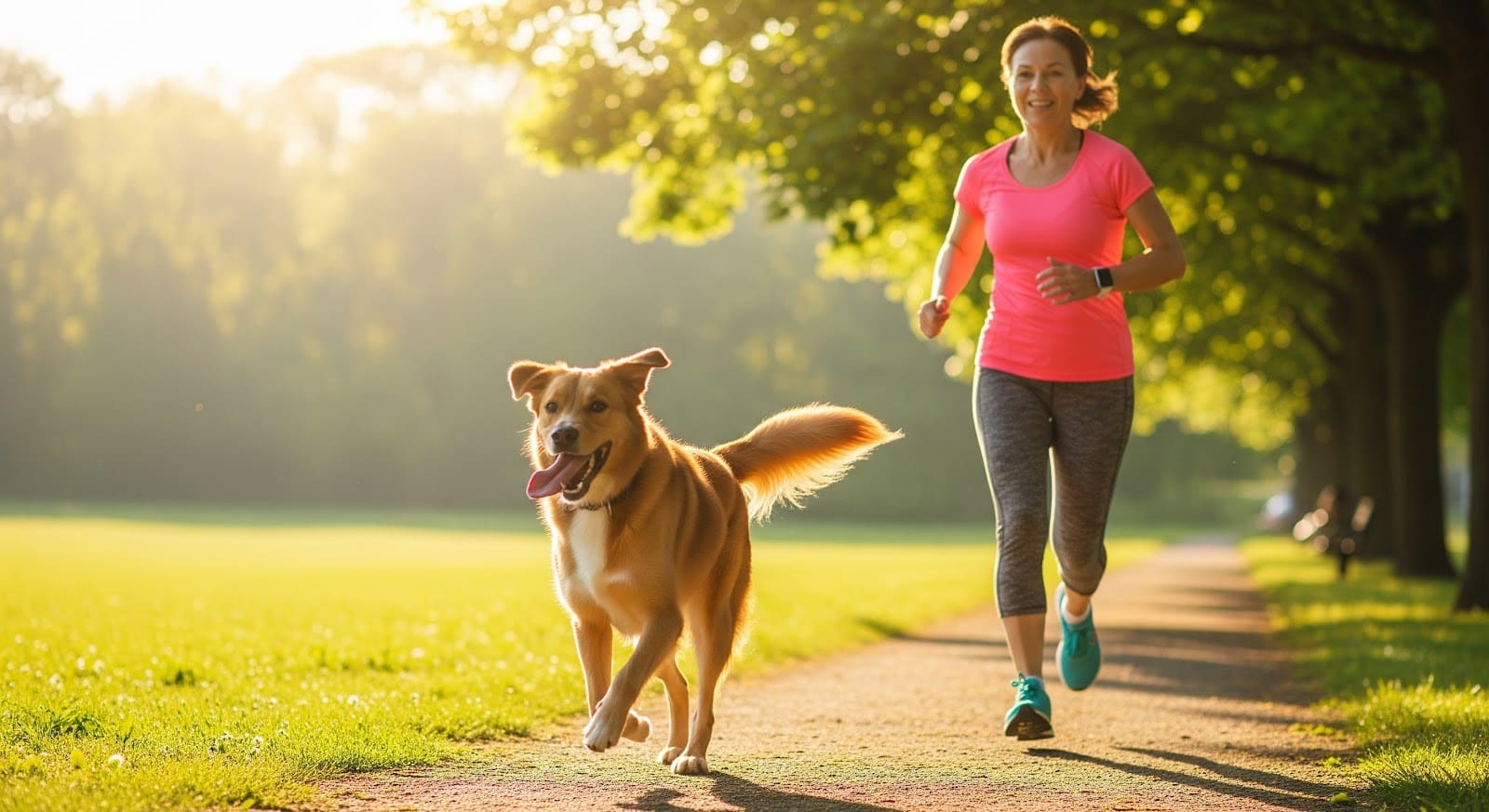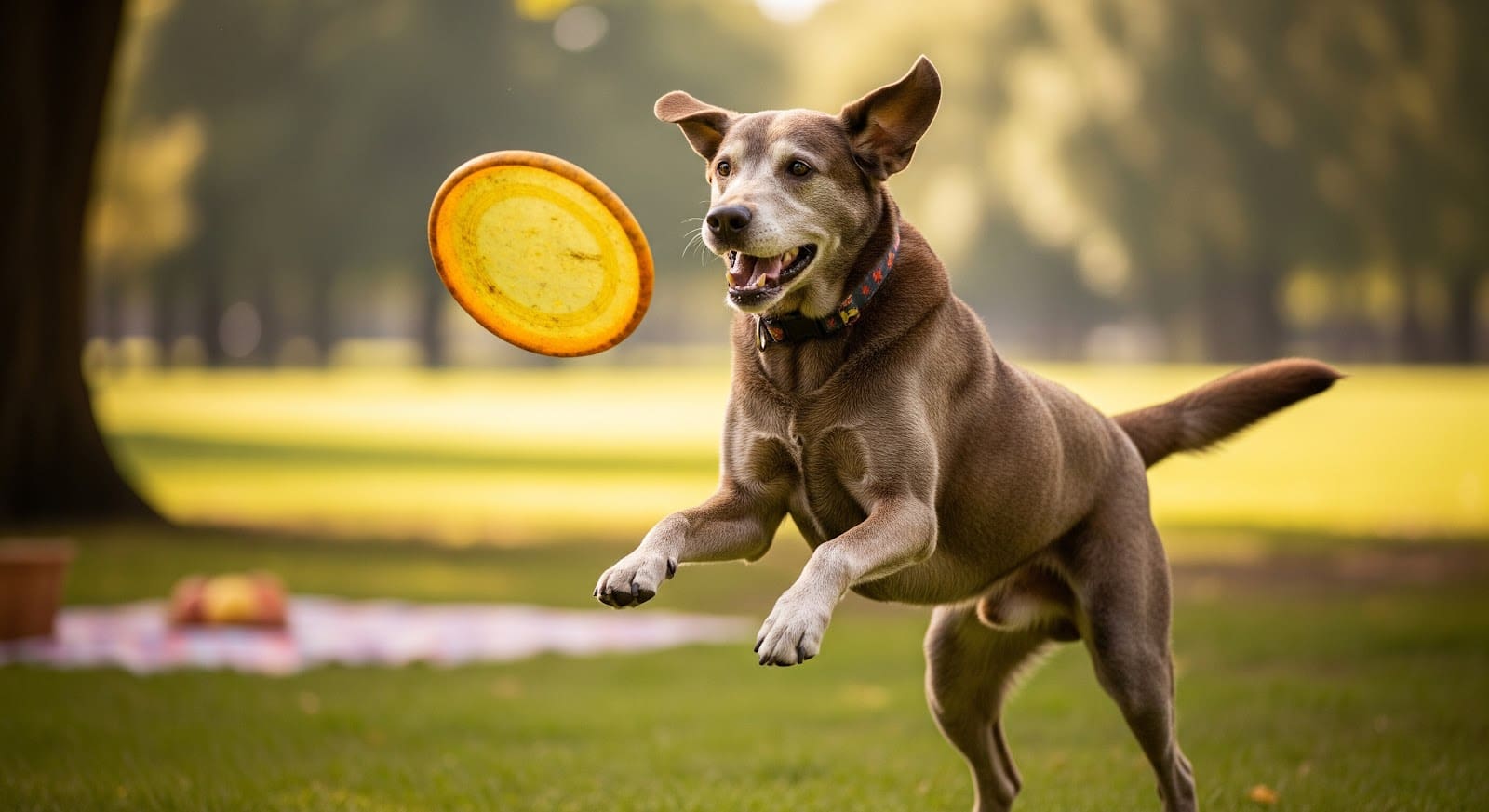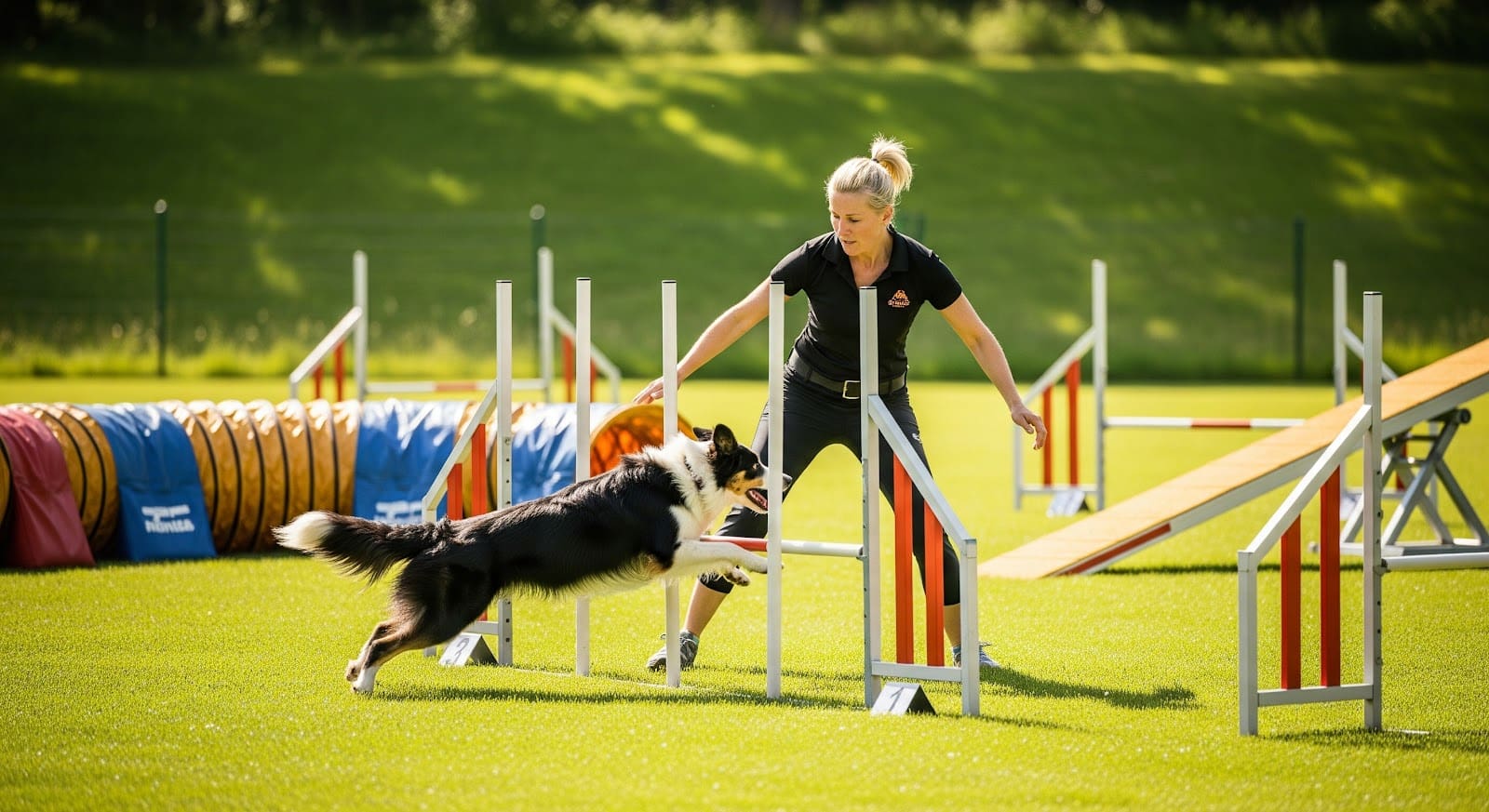It's a common desire for dog owners to provide their canine companions with the best possible life, and a long one at that. While proper nutrition and diligent veterinary medicine are crucial, the undeniable truth, backed by a growing body of research and numerous studies, is that active dogs live longer. This isn't just anecdotal; it's a fundamental principle of responsible dog ownership rooted in the profound and multifaceted benefits of exercise for dogs. As guardians of our four-legged friends, understanding this connection is key to extending their vibrant years.
The Science of Longevity: Why Movement Matters So Much

The correlation between regular exercise and extended life span in our beloved dogs is well-documented across various scientific fields, from biomedical sciences to the latest findings in veterinary medicine. Just as with humans, consistent physical activity is a cornerstone of robust physical health and overall well-being for dogs. A lack of activity can lead to a host of problems. At the same time, an appropriate exercise program can ward off many common ailments, giving your dog a significantly reduced risk of premature health decline and premature death.
Effective weight management is one of the most immediate and critical health benefits of physical activity. Obese dogs face an alarming increased risk of numerous severe health complications. Many dogs are overweight, increasing the risk of reduced lifespan and various health issues. These include joint-debilitating problems such as arthritis, certain types of cancer, and metabolic disorders like diabetes. Maintaining a healthy weight through regular daily exercise is paramount for their long-term health. Studies published in reputable journals like Vet Intern Med and Front Vet Sci consistently highlight the reduced risk of these chronic conditions in active dogs with an ideal body condition. Regular engagement in physical activity ensures that calories are burned, muscle mass is maintained, and metabolism functions optimally.
Beyond managing weight, regular physical activity directly and profoundly impacts heart health. Aerobic exercise, such as brisk dog walking, engaging in a vigorous game of fetch, or even swimming, strengthens the cardiovascular system. This systematic conditioning leads to a more efficient heart muscle and improved circulation throughout the body. This improved cardiovascular fitness reduces the risk of conditions mirroring human coronary heart disease. A strong, efficient heart ensures optimal blood flow and oxygen delivery to all organs and tissues, optimizing their function and contributing significantly to your dog’s needs for a strong, healthy circulatory system. The owner's age and behavior can also influence the dog's physical activity levels and overall health, as more active owners tend to have more active and healthier dogs. This commitment to an exercise program is foundational to their general health and contributes directly to a longer, more vigorous life.
Furthermore, consistent movement is vital for musculoskeletal integrity. While young puppies need careful consideration regarding intensity, and older dogs might require more gentle activities, regular physical activity helps maintain joint lubrication, strengthens supporting muscles and ligaments, and improves flexibility. This proactive approach can significantly manage and even delay the onset of age-related joint issues, helping your companion animals remain agile and comfortable throughout their lives.
More Than Just Physical: The Mental, Social, and Immune Rewards

The benefits of exercise for dogs extend far beyond the physical; they encompass crucial aspects of mental health and social well-being. Regular exercise provides essential mental stimulation, preventing boredom and reducing excess energy that can manifest as destructive chewing, excessive barking, or anxiety. A mentally engaged and physically tired dog is often a calmer and better-behaved pet, which in turn reduces stress for both you and your canine companions. The release of endorphins during exercise acts as a natural mood elevator, contributing to a happier disposition and greater resilience. Dogs and owners who are regularly walked experience lower obesity rates, improved heart health, and overall wellness.
Furthermore, engaging in physical activity often provides invaluable social opportunities. During dog walking, your pet can interact with other dogs and dog owners, fostering positive human interaction and helping prevent social isolation. Whether professional or dedicated owners, dog walkers play a significant role in promoting exercise and preventing pet obesity. This social component is crucial for their overall well-being and development. For young puppies, early socialization during supervised walks and play with other dogs is key to developing into well-adjusted adults, equipped to handle new situations and environments. When choosing a new puppy, it is crucial to consider their exercise needs to ensure a good match for your lifestyle. For older dogs, continued gentle social interaction can combat the effects of age-related cognitive decline and loneliness. Getting out for fresh air, new sights, and smells also provides unparalleled mental stimulation.
Beyond these physical and psychological advantages, substantial evidence from veterinary medicine and human studies suggests that regular physical activity bolsters the immune system. Moderate exercise improves circulation, allowing immune cells to travel more efficiently throughout the body. It also helps reduce chronic stress, which can suppress immune function. A robust immune system means your dog is better equipped to fight off illnesses and recover more quickly from sickness, leading to fewer trips to the vet and a healthier, more consistent quality of life.
A systematic review of physical activity levels in pets has shown that the time spent in active pursuits directly correlates with positive health outcomes. While different breeds have varying exercise requirements, the underlying principle remains universal: movement is medicine. Whether it’s high-intensity aerobic exercise for a high-energy working breed or gentle walking for a smaller companion, tailoring an exercise program to your dog's needs is essential. More research continues to emerge, underscoring the deep connection between a consistent exercise program and the long-term health of our companion animals. Journal articles like those found in Behav Nutr Phys Act also shed light on the mutual benefits for owners and dogs alike, as shared physical activity enhances the human-animal bond.
Healthy Weight, Healthy Years: The Link Between Activity and Lifespan

Maintaining a healthy weight is one of dog owners' most potent ways to help their canine companions enjoy a longer, healthier life. Regular exercise and daily physical activity are essential not only for keeping dogs fit but also for supporting the overall health and well-being of both pets and their owners. When dog owners commit to regular dog walking or active play, they’re not just meeting their dog’s exercise requirements—they’re also reducing the risk of obesity and the many health problems that come with it.
Obese dogs face a significantly increased risk of age-related health issues, including coronary heart disease, diabetes, and even certain cancers like breast cancer. These conditions can shorten a dog’s life and diminish their quality of life. By ensuring dogs maintain a healthy weight and ideal body condition through consistent physical activity, owners can help prevent these serious health concerns. Studies suggest that dogs who engage in regular physical activity are less likely to develop chronic diseases and more likely to enjoy a longer, more vibrant life.
The benefits of dog ownership extend far beyond physical health. Spending time with canine companions—whether through walking, jogging, or simply playing outside—provides valuable mental stimulation and fresh air for both dogs and their owners. Regular physical activity helps reduce stress, combat social isolation, and foster connections with other dog owners, all contributing to improved mental health and overall well-being. The simple act of walking your dog can become a daily routine that supports both your health and your pet’s, creating lasting habits that benefit everyone involved.
Regular exercise is not just a luxury for dogs—it’s a necessity. Without enough physical activity, dogs are at greater risk for obesity, which can lead to a cascade of health problems and a reduced life expectancy. By prioritizing daily exercise, dog owners can help their pets maintain a healthy weight, reduce the risk of age-related diseases, and support their overall health. Meeting your dog’s exercise requirements also strengthens the bond between you and your four-legged friend, making every walk or play session an investment in a happier, healthier future.
In summary, the link between activity and lifespan is undeniable. Regular physical activity, such as dog walking, is a simple yet powerful way to promote a healthy weight, reduce the risk of chronic health problems, and enhance the quality of life for both dogs and their owners. By prioritizing daily exercise, dog owners can ensure their pets enjoy more years of companionship, vitality, and joy—while also reaping the health benefits themselves. The science is precise: active dogs and those who love them live longer and healthier lives.
K9 Conquest: Your Partner in Promoting a Longer, Healthier Life

Understanding the profound impact of the benefits of exercise for dogs is the first step. The next step is to consistently implement an effective exercise program into their daily routine. That’s precisely where K9 Conquest comes in.
At K9 Conquest, we believe in empowering dog owners with the highest quality tools and expert knowledge to unlock their dog’s full potential for a long and vibrant life. We champion the importance of an active lifestyle, not just for the immediate joy it brings but for its demonstrable health benefits, extended lifespan, and enhanced fitness. Whether you’re looking for:
- High-quality, durable toys to make every playtime session engaging and to ensure excess energy is expended safely.
- Expert-designed training programs that enhance obedience and encourage active participation in various disciplines.
- Nutritional guidance to perfectly complement an active lifestyle and help maintain a healthy weight and ideal body condition.
- Performance gear that stands up to the rigors of an active dog’s life, from comfortable harnesses for dog walking to protective paw wear for more adventurous outings.
Our products and programs can also complement recommendations from small animal practice) professionals, supporting tailored exercise routines for dogs as advised in veterinary settings.
K9 Conquest is your trusted one-stop shop for everything you need to foster an active, healthy, and long life for your beloved companion animals. We’re passionate about helping active dogs live longer by providing unparalleled resources that promote optimal dog health and movement. Our commitment ensures that owners have access to the best products that support regular physical activity for dogs of all ages and different breeds. From young puppies embarking on their first walks to older dogs needing gentle, consistent exercise, we’ve got you covered.
From managing the risk of obesity to bolstering heart health and enhancing mental health, the science is overwhelmingly clear: your dog’s physical activity levels directly correlate with their overall health and longevity. Embrace the power of movement and see the incredible difference it makes in your pets’ lives. Don’t let your four-legged friend miss out on the great benefits of an active lifestyle.
FAQs
- How much exercise does my dog need each day?
It depends on your dog’s age, breed, and energy level. Most adult dogs need at least 30 minutes to 2 hours of physical activity daily, and high-energy breeds may require even more. Puppies and senior dogs also need exercise, but it should be tailored to their developmental stage and physical abilities. - Can walking alone meet my dog’s exercise requirements?
For many dogs, daily walks are an excellent foundation—but they may not be enough. Activities like fetch, swimming, hiking, agility training, or interactive play can provide more variety and engagement. Mental stimulation is also important, so combining movement with games or training is ideal. - What are signs my dog isn’t getting enough exercise?
Common signs include restlessness, destructive behavior, excessive barking, weight gain, and boredom-related anxiety. Dogs may also appear hyperactive indoors or lethargic due to a lack of stimulation. A well-exercised dog is generally calmer and more content. - Is it safe to exercise my dog in hot or cold weather?
Extreme temperatures can be dangerous. In hot weather, walk your dog during early morning or evening hours, avoid hot pavement, and always bring water. In cold weather, short-haired or small breeds may need a dog coat, and you should monitor for signs of frostbite or paw irritation from ice and salt. Adjust the intensity and duration as needed. - What’s the best way to start an exercise routine with my dog?
Begin with short, consistent sessions and gradually increase intensity. Incorporate a mix of walking, play, and interactive games. Always observe how your dog responds and consult your vet if your pet has existing health conditions or if you’re unsure how much activity is safe.




